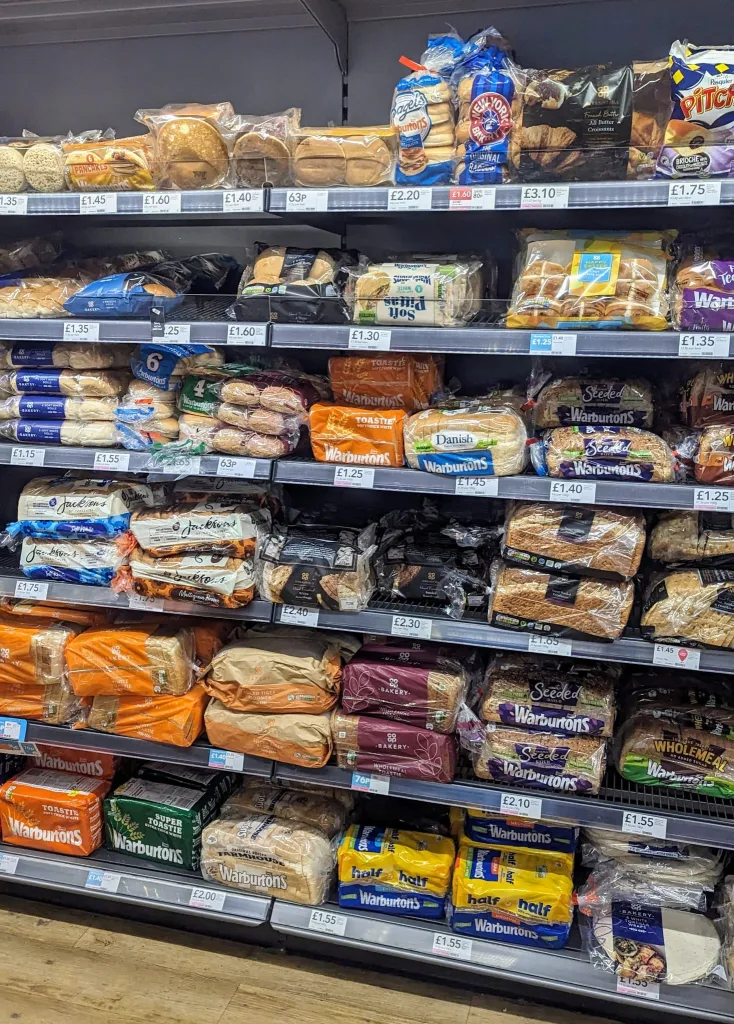In a worrying 2024 study of 92,000 French adults using data collected between 2009 and 2021 from people from the NutriNet-Sante cohort, some very common food emulsifiers have been linked with huge increases in the chance of developing some types of cancer.
Emulsifiers are very widely used additives in the food industry, most commonly found in ultra-processed foods like bread, margarine, chocolate, ice-cream and processed meat. Without emulsifiers, the oil and water in these products will separate. Food producers tell us they improve texture and shelf-life. However, as with many modern ingredients, chemically produced ingredients are simply cheaper than traditional, more natural ingredients, so are now replacing them.
The data collected linked the emulsifier E471 (also known as mono- and diglycerides of fatty acids) with a 46% higher risk of developing prostate cancer in men, a 24% higher risk of developing breast cancer, and a 15% overall increased risk of developing cancer in general. The emulsifiers E407 and E407a (Carrageenan) were also linked with a 32% higher risk of developing breast cancer compared to the groups in the study with lower intakes of these ingredients.
After an average follow-up of 7 years, the researchers found that higher intakes of mono- and diglycerides of fatty acids (E471) were associated with increased risks of cancer overall (a 15% higher risk among those consuming the most – 3rd tercile – compared with those consuming the least – 1st tercile), breast cancer (a 24% higher risk), and prostate cancer (a 46% higher risk). On the other hand, women with higher carrageenan intakes (E407 and E407a) had a 32% higher risk of developing breast cancer, compared with the group with lower intakes.
But wait, aren’t these additives natural!?

You could certainly argue that, but as with many other things you could class as natural such as Polonium 210, asbestos, Escherichia coli (E. coli) O157, and Polio, being ‘natural’ certainly isn’t a guarantee of safety as a food.
E471 is mainly produced from vegetable oils (such as soybean), although animal fats are sometimes used and cannot be completely excluded as being present in the product. The fatty acids from each source are chemically identical.
E407 and E407a – Carrageenan – are a natural ingredient that comes from red seaweed (also called Irish moss). Other evidence appears to suggests that carrageenan may trigger inflammation, gastrointestinal ulcerations, and that it damages your digestive system.
What should I look out for on the list of ingredients?
As with many modern ingredients, food producers may try to disguise the ‘E’ name of the ingredient – after all, Irish Moss sounds much tastier then E407. Here is a brief list of the other names you may see on the packaging:
E471 – mono‐ and diglycerides of fatty acids – may also be listed as glyceryl monostearate, glyceryl monopalmitate, glyceryl monooleate, monostearin, monopalmitin, monoolein, partial glycerides, or GMS (for glyceryl monostearate).
E407 – carrageenan – may also be listed as Carraghénanes, Carraghénane, Mousse d’Irlande, Eucheuman (d’Eucheuma spp.), Iridophycan (d’Iridaea spp.) Hypnean (d’Hypnea spp.), Furcellaran, mousse du Danemark (de Furcellaria fastigiata), Carraghénane (de Chondrus et Gigartina spp.)
E407a – Processed eucheuma seaweed – may also be listed as Algues euchema transformées, Algues euchema traitées, PES, Processed Eucheuma Seaweed
Which specific food products should I avoid?
Below you’ll find links to the excellent Open Food Facts website which contains thousands of foods that contain the emulsifiers E471, E407 and E407. In the meantime, here is a list of some notable examples taken from the Open Food Facts website:
- Bread bought in plastic packaging , such as Hovis Best of Both, Warburton Sandwich Thins, Warburtons Wholemeal, or Co-Op Wholemeal Rolls. It’s worth noting that these emulsifiers don’t tend to appear in the supermarket bakery bread, such as Tesco Bakery bread – the type of ‘fresh’ bread, baked on-site, and with a short shelf-life
- Butter-type spreads such as Utterly Butterly, Vitalite Dairy-Free, Bertolli Olive Spread, or Benecol Buttery Taste. It’s worth noting that these emulsifiers don’t appear to be ingredients in many spreadable butters such as Aldi Norpak, Lurpak Spreadable Butter, or Morrisons Spreadable
- Ice-creams such as Carte D’Or Magadascan Vanilla, Mackie’s of Scotland Traditional Real Dairy Ice Cream, Walls Viennetta, Walls Twister, or Walls Cornetto
- Creams such as Kelly’s Clotted Cream ice cream, Elmlea Double Cream, Alpro Single Soya Cream, and Elmlea 100% Plant Alternative to Dairy Double Cream
- Cereals such as Harvest Morn Choco Rice,
- Chocolates and confectionery such as Pringles, Snackright Teddy Faces, hula Hoops Puft, Pombear Original, Cadburys Celebrations, Cadburys Bounty, Cadbury Mini Rolls, Cadbury Heroes, Lyle’s Golden Syrup Sticky Pudding Cake, or Pomme Bears (crisps),
- Other such as Old El Paso Crispy Chicken Fajita Kit, or Sainsbury’s Coconut Cream
More information about foods containing E471, E407 and E407a from the Open Food Facts website
- E471 – https://uk.openfoodfacts.org/additive/e471-mono-and-diglycerides-of-fatty-acids
- E407 – https://uk.openfoodfacts.org/additive/e407-carrageenan
- E407a – https://uk.openfoodfacts.org/additive/e407a-processed-eucheuma-seaweed
References and further reading
Food additive emulsifiers and cancer risk: Results from the French prospective NutriNet-Santé cohort – PLOS website https://journals.plos.org/plosmedicine/article?id=10.1371/journal.pmed.1004338
What are emulsifiers and what are common examples used in food? https://foodsafety4.eu/knowledge/articles/what-are-emulsifiers-and-what-are-common-examples-used-in-food/
L’étude NutriNet-Santé website – https://etude-nutrinet-sante.fr/
Inserm website (press release) https://presse.inserm.fr/en/la-consommation-de-certains-additifs-alimentaires-emulsifiants-serait-associee-a-un-risque-accru-de-cancers/68077/
